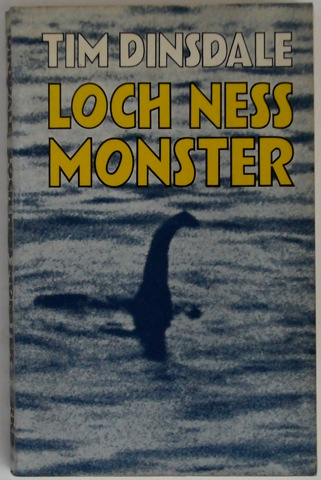A Supernatural Nessie?
Posted by: Nick Redfern on September 18th, 2012

At the Loch Ness Mystery blog, there’s a thought-provoking new article that deals with the matter of whether or not the well-known monster-hunter, Tim Dinsdale, considered or believed Nessie might not be just flesh and blood in nature.
Glasgow Boy says in his post:
“What seems certain is that Tim Dinsdale did not shut the door on a paranormal Loch Ness Monster and he had tales to tell of Loch Ness which I suspect are now lying in a box or folder somewhere crying out to be told to the world! Sadly, it is probably safe to assume that if such material does exist, it will go the way of other Loch Ness research and never see the light of day again.”
About Nick Redfern
Punk music fan, Tennents Super and Carlsberg Special Brew beer fan, horror film fan, chocolate fan, like to wear black clothes, like to stay up late. Work as a writer.










I don’t accept it necessarily, but being open-minded, I wouldn’t dismiss it out of hand.
Could we kinda …I dunno, determine that there is a Nessie first?
DWA makes a good point; I’d like to take it a step further, adding: “Ditto” regarding the existence of supernatural, paranormal and multi/inter-dimensional beings.
And before anyone thinks we are piling on:
Zoology – which is what “crypto”zoology is – is all about EVIDENCE. Just as the other hard sciences are.
People see odd things in the sky, and in the water. I’ve seen a few. But even the ones I didn’t explain (and I think there might not be more than one, OK, two, maybe), I figured that I simply didn’t get a good enough look to explain.
Nessie sightings seem much more all over the place than sasquatch or yeti sightings, in terms of what the witness describes seeing. There doesn’t seem to be a convincing handle on what they could be. Even the “extant plesiosaur, pinniped, cetacean, etc.” arguments for Nessie, although they have popular appeal, aren’t backed by an adequate level of evidence to justify search parameters. In the absence of this evidence, speculation can run rampant.
It shouldn’t.
Today’s paranormal might be tomorrow’s normal. Let’s figure out what’s in the Loch. There is only so much idle speculation one can do before scientists read it and go: THAT’s why I don’t spend a lot of time on this topic.
The article itself is more about a Nessie hunter than Nessie. Unlike Bigfoot, one only sees “bits” of Nessie at a time. In fact, most of the sightings can be summed up as one or two large humps with the occassional head/neck. At the fringes of this basic model you do have variances.
Ok, admission. I’m quite the idle speculator. 😉
I don’t really mind idle speculation that much and don’t think it is always a worthless endeavor. It can sometimes lead to bigger and better things, and some very important ideas have had their origins in idle speculation. However, I’d say that there has to be some sort of follow up on these hypotheses and some reason to suppose they could lead somewhere if one is to pursue them. There has to be some sort of inquiry to separate the reality from the bogus in order for idle speculation to evolve into something more; something that could be important.
In the case of Nessie, speculating on what the creature could be is all good and well, but then we have to determine if that speculation holds water or not. You have to strike that idea against the other ideas, evidence, and data at hand. For instance, there has already been a lot of good scientific data to be able to pretty much disregard the traditional explanations such as plesiosaurs.
I think that we follow an idea and disregard it or pursue it further in relation to where the evidence points. It seems there is something in the lake that is perhaps weird, but there is a lot of information pointing to and away from various hypotheses. I’d say narrow that down, look into or rule out simpler mundane explanations, see if an idea sticks and further bolster any one hypotheses before bringing in wild cards like the supernatural.
Right now, I’m still trying to determine if Nessie is just waves, logs, misidentified known species, or any number of other things it might be other than an undiscovered large animal. If it could only reasonably be an unknown large animal, then I would go about trying to determine what kind of animal it possibly is, and if it couldn’t possibly be an animal at all, you go from there. You work with and investigate the known before tentatively poking around into the unknown. That is how science tends to work.
In the case of Nessie, with all of the variables, conflicting reports, and general lack of really concrete evidence on any one idea, why would I want to go throwing in x factors like the paranormal at this point in time?
Idle speculation doesn’t have to be the enemy, but let’s not try to throw more unknowns onto the fire here.
mystery_man:
No problem with anything you’ve posted.
But…particularly with your last sentence.
Somewhere the postulating of ever-more-scattered unknowns needs to yield to: here’s the case to look, and here’s how, and let’s do it.